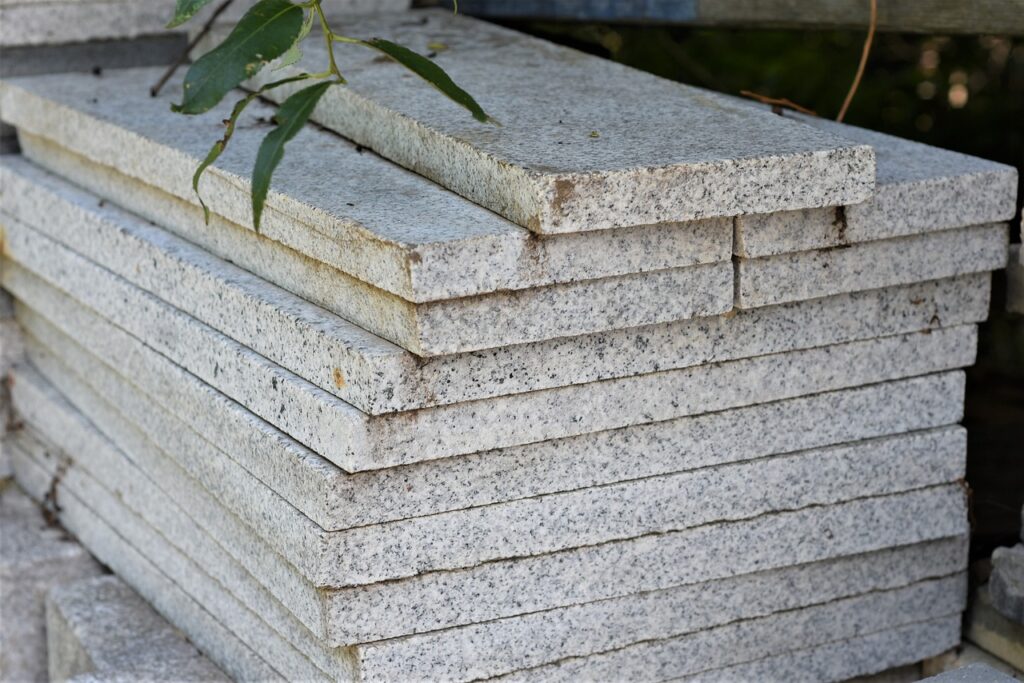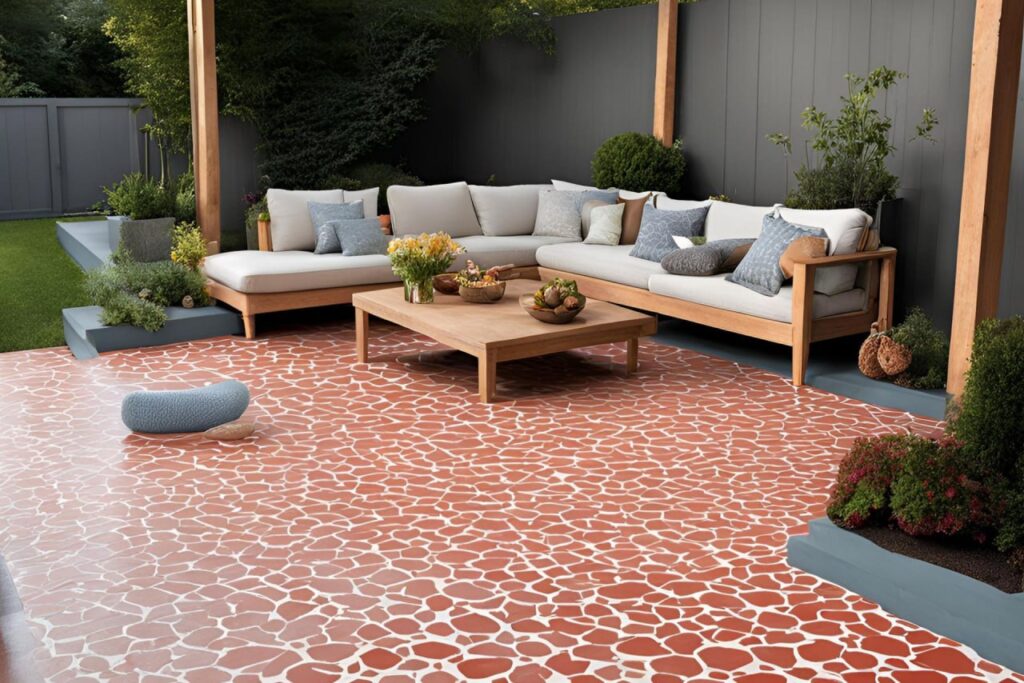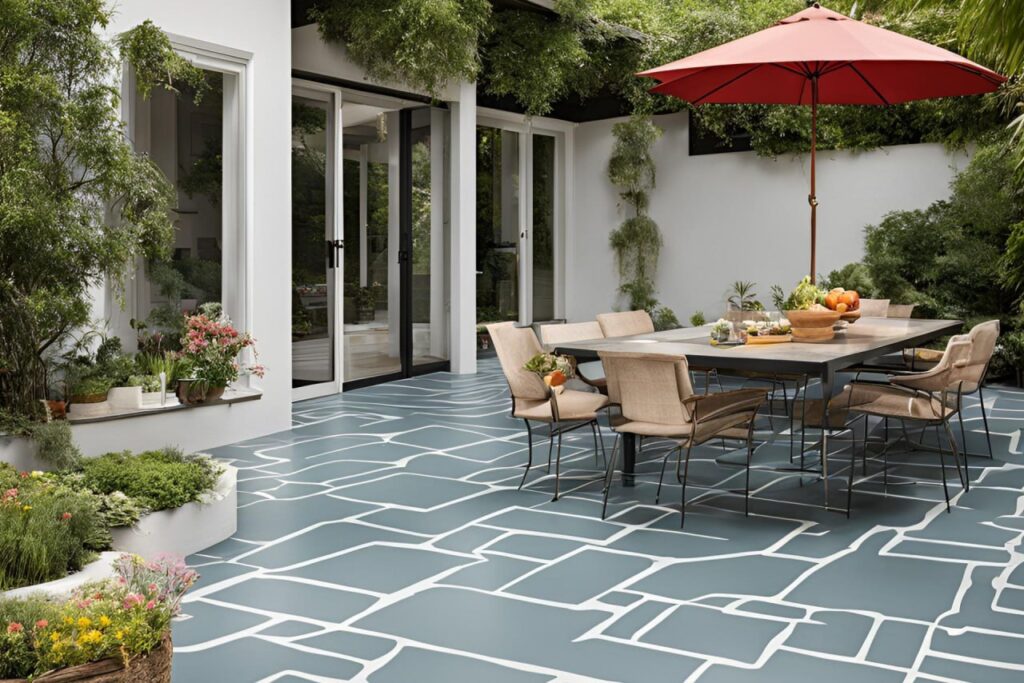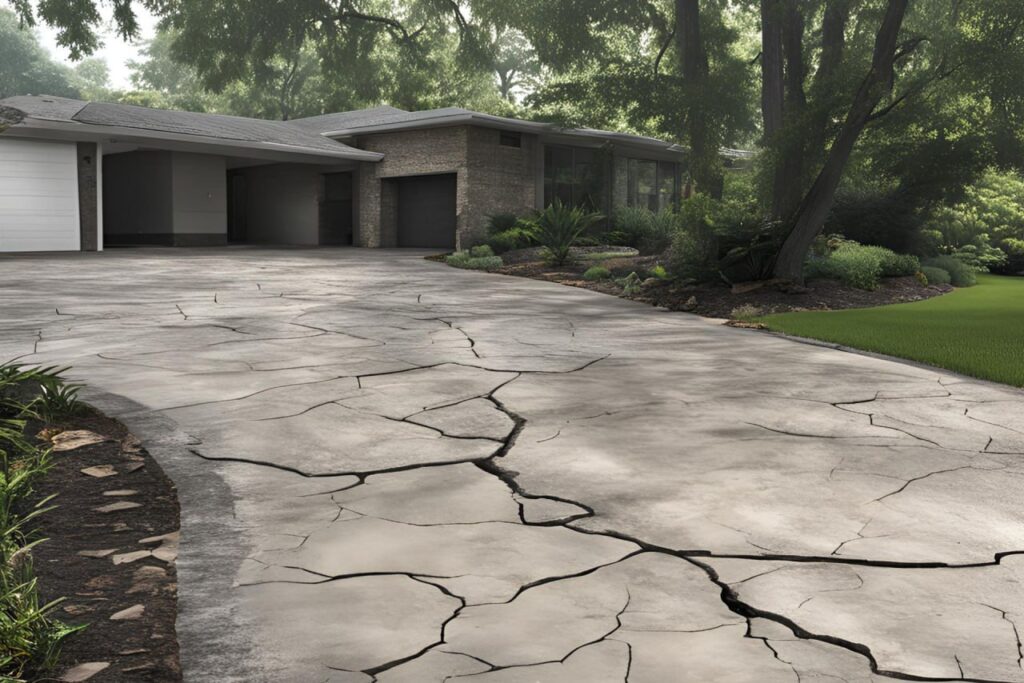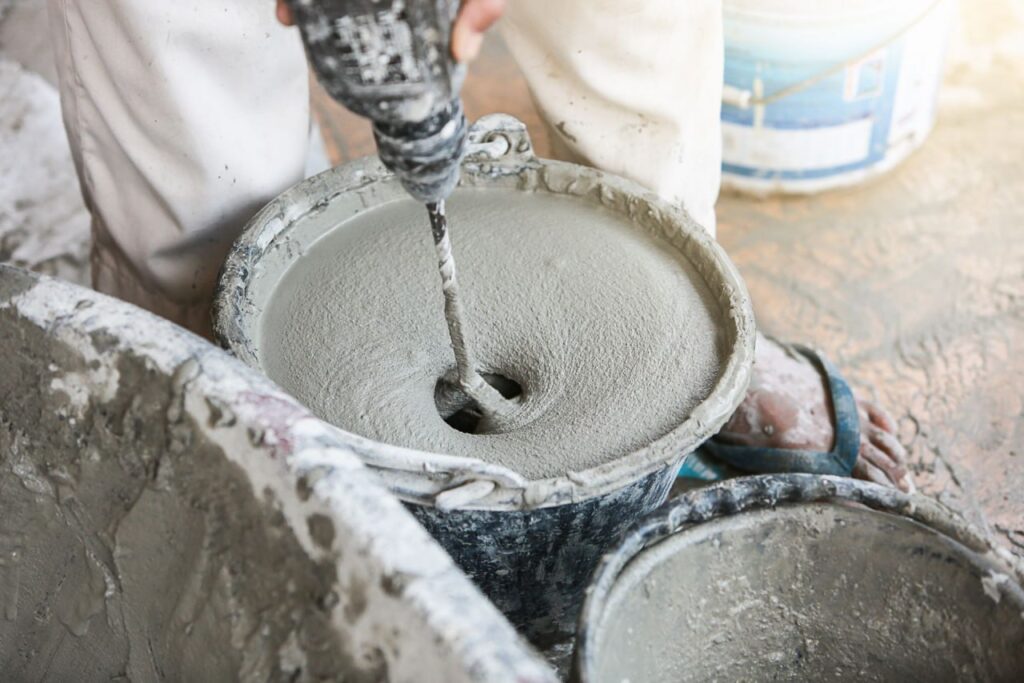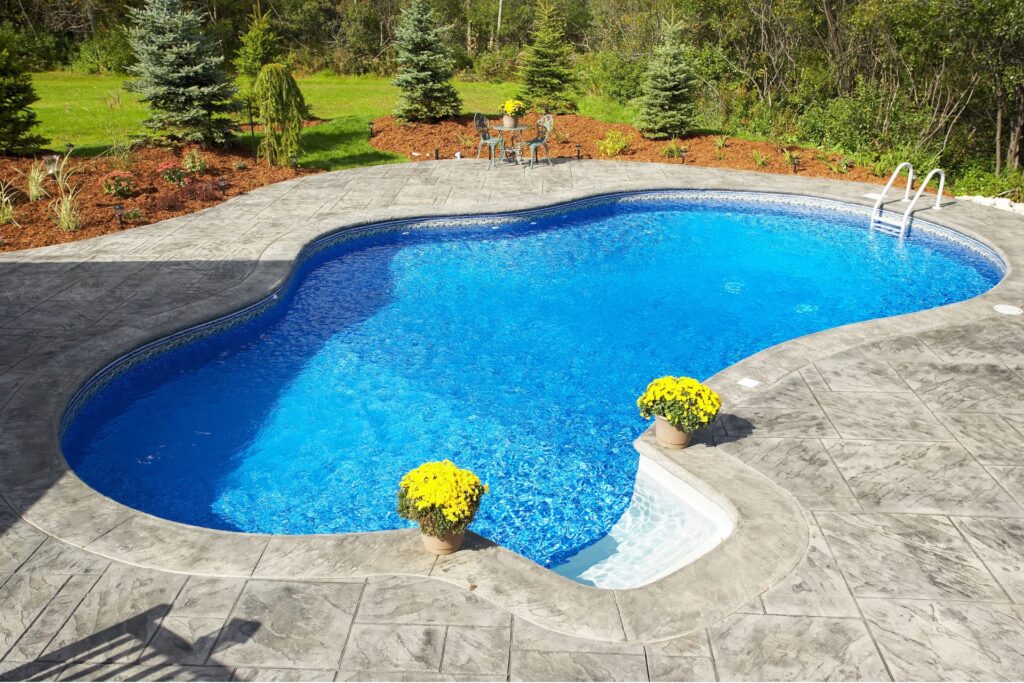Welcome to our comprehensive guide on understanding the differences between stamped and stained concrete. Choosing the right concrete finish can significantly impact your space’s aesthetic and functional aspects. In this post, we will delve into the unique characteristics, benefits, and limitations of stamped and stained concrete, providing you with all the information you need to make an informed decision. Whether planning a new patio, driveway, or interior floor, understanding these two popular concrete finishing techniques will help you achieve the look and durability you desire. Let’s explore the world of stamped and stained concrete to discover which option best suits your project needs.
Stamped concrete involves imprinting patterns onto freshly poured concrete to mimic the appearance of materials like brick, stone, or wood, offering versatile designs and textures. Stained concrete, on the other hand, uses acid or water-based stains to penetrate the concrete surface, adding rich, translucent colors that enhance its natural look. While stamped concrete is ideal for creating intricate patterns for outdoor spaces, stained concrete provides a unique, custom finish perfect for interior floors. Both options offer durability and aesthetic appeal but differ in application, maintenance, and cost.
Understanding Stamped Concrete
Stamped concrete, also known as imprinted or textured concrete, is a type of concrete that is designed to resemble more expensive materials such as brick, stone, or wood. It is created by pressing molds into the concrete while it is still wet, which gives it the desired texture and pattern.
Process
Preparing the Base
The first step in installing stamped concrete is preparing the base. This involves clearing the area of any debris, or vegetation, and ensuring the ground is level. A layer of gravel or crushed stone is then added to provide a stable foundation. This base layer helps prevent shifting and settling, which can cause cracks in the concrete over time.
Pouring the Concrete
Once the base is prepared, the concrete is mixed and poured into the area. The consistency of the concrete is crucial at this stage; it needs to be just right to ensure the best results. After pouring, the concrete is spread evenly and smoothed out using a trowel. At this point, color can be added to the concrete mixture or applied to the surface to give it a more natural appearance.
Applying Stamps to Create Patterns
The defining characteristic of stamped concrete is the pattern. While the concrete is still wet, large rubber stamps are pressed into the surface to create the desired texture. These stamps are often designed to mimic the look of natural materials like stone, brick, or wood. To ensure a uniform pattern, the stamps are applied systematically across the entire surface. Once the stamping is complete, the concrete is left to cure, and a sealant is applied to protect the surface and enhance its appearance.
Common Patterns and Designs
Stamped concrete can be customized with a variety of patterns and designs. Some of the most popular include:
- Brick: A classic choice that offers a traditional, timeless look.
- Stone: Provides a natural, rustic appearance, ideal for patios and walkways.
- Wood: Mimics the look of wooden planks, offering a warm and inviting aesthetic without the maintenance issues associated with real wood.
Benefits
Aesthetic Versatility
One of the main advantages of stamped concrete is its aesthetic versatility. It can be designed to complement a wide range of architectural styles and color schemes. Whether you want the look of brick, stone, or wood, stamped concrete can be tailored to match your vision.
Durability and Longevity
Stamped concrete is incredibly durable and can withstand heavy foot traffic, harsh weather conditions, and the wear and tear of everyday use. When properly installed and maintained, it can last for decades without losing its beauty.
Cost-Effectiveness
Compared to natural stone or wood, stamped concrete is a more cost-effective option. It provides the same visual appeal at a fraction of the cost. Additionally, because it is less labor-intensive to install, the overall project costs are typically lower.
Limitations
Potential for Cracking
One of the drawbacks of stamped concrete is its potential for cracking. While concrete is a strong material, it is not entirely impervious to cracks, especially if the base is not properly prepared or if the concrete is exposed to severe freeze-thaw cycles. However, with proper installation and maintenance, the risk of cracking can be minimized.
Maintenance Requirements
Stamped concrete requires some maintenance to keep it looking its best. This includes regular cleaning and resealing every few years to protect the surface from stains, moisture, and wear. Without proper maintenance, the color and texture of the concrete can fade over time.
Understanding the intricacies of stamped concrete can help you make an informed decision for your next project. Its blend of aesthetic appeal, durability, and cost-effectiveness makes it a popular choice for homeowners and businesses alike. However, it’s important to consider both its benefits and limitations to ensure it meets your needs and expectations. With the right care, stamped concrete can be a beautiful and lasting addition to any space.

Understanding Stained Concrete
Stained concrete is a decorative finish applied to concrete surfaces, transforming plain concrete into vibrant, eye-catching designs. Unlike paint, which sits on the surface, stains penetrate the concrete, creating a permanent, durable color that enhances the natural beauty of the material. Stained concrete can mimic the look of stone, marble, or even wood, making it a versatile choice for both interior and exterior applications.
Process
Staining concrete involves several crucial steps to ensure a flawless and long-lasting finish:
Preparing the Surface
The first step in staining concrete is preparing the surface. This involves thoroughly cleaning the concrete to remove any dirt, oil, or other contaminants. Any cracks or imperfections should be repaired to ensure an even application. The surface is then etched, usually with a mild acid solution, to open up the concrete’s pores, allowing the stain to penetrate deeply.
Applying Acid or Water-Based Stains
Once the surface is prepared, the stain is applied. There are two main types of stains: acid-based and water-based.
- Acid-Based Stains: These stains contain metallic salts that react chemically with the minerals in the concrete. This reaction creates a unique, variegated finish that mimics the look of natural stone. The colors tend to be earth-toned, ranging from tans and browns to soft blues and greens.
- Water-Based Stains: These stains offer a broader palette of colors, from vibrant reds and oranges to subtle pastels. Water-based stains work by depositing pigment particles into the concrete’s pores. They do not react chemically with the concrete, so the color tends to be more uniform than acid stains.
The stain is typically applied with a sprayer, roller, or brush, and multiple coats may be needed to achieve the desired depth of color. It’s essential to allow each coat to dry completely before applying the next.
3. Sealing the Concrete
After the stain has been applied and allowed to dry, the final step is sealing the concrete. A sealer helps to protect the stained surface from moisture, stains, and wear. It also enhances the color, giving it a richer, more vibrant look. Sealers come in various finishes, from matte to high-gloss, allowing you to choose the level of shine that best suits your design.
Types of Stains
Acid Stains
- Pros: Acid stains create a unique, variegated finish that cannot be replicated with other products. They enhance the natural variations in the concrete, giving it a rich, organic look.
- Cons: The color options are limited to earth tones, and the application process can be more challenging due to the chemical reaction involved. There’s also a potential for uneven color application if not done correctly.
Water-Based Stains
- Pros: Water-based stains offer a broader range of colors, including vibrant and pastel hues. They are easier to apply and less hazardous than acid stains.
- Cons: While they provide a more uniform color, they may not have the same depth and variation as acid stains. Additionally, they may require more maintenance over time.
Benefits
Stained concrete offers several benefits that make it a popular choice for both residential and commercial projects:
- Unique, Custom Finishes: Each stained concrete surface is unique, with the potential for creating custom designs and patterns that can’t be achieved with other flooring materials.
- Enhances Natural Concrete Look: Stains enhance the natural look of concrete, highlighting its texture and variations.
- Low Maintenance: Once sealed, stained concrete is easy to maintain. It resists moisture, stains, and wear, making it a durable choice for high-traffic areas.
Limitations
While stained concrete has many advantages, there are also some limitations to consider:
- Limited Color Options with Acid Stains: Acid stains are restricted to earth tones, which may not suit all design preferences.
- Potential for Uneven Color Application: Especially with acid stains, achieving a uniform color can be challenging. The chemical reaction can result in variations that some may see as imperfections.
In summary, stained concrete is a versatile and durable option for enhancing concrete surfaces. By understanding the types, processes, benefits, and limitations, you can make an informed decision on whether stained concrete is the right choice for your project.

Comparing Stamped And Stained Concrete
When it comes to enhancing the aesthetic appeal of your outdoor spaces or interiors, stamped and stained concrete are popular choices. Both offer unique advantages, but they also have distinct differences that make them suitable for various applications. Let’s dive into the details to help you decide which option might be the best for your project.
Aesthetic Differences
- Visual Appearance and Texture: Stamped concrete is designed to mimic the look and texture of other materials such as stone, brick, or wood. It involves pressing patterns into freshly poured concrete, which can then be colored to create a realistic effect. This method allows for a wide variety of designs and textures, making it a versatile option for those looking to achieve a specific look.
On the other hand, stained concrete offers a more understated, elegant appearance. It involves applying a chemical stain to the concrete surface, which reacts with the concrete to create natural-looking, variegated color effects. Stains can be acid-based or water-based, providing a range of hues from earthy browns to vibrant blues and greens. This method is perfect for achieving a more subtle, artistic finish.
- Suitability for Various Design Styles: Stamped concrete is ideal for those who want to replicate the look of natural materials at a lower cost. It’s particularly popular in outdoor settings such as patios, walkways, and driveways. Stained concrete, however, is often preferred for interior spaces like basements, kitchens, and bathrooms where a polished, decorative look is desired.
Installation Process
- Time and Labor Differences: The installation of stamped concrete is more labor-intensive and time-consuming than staining. The process involves several steps: pouring the concrete, adding color, stamping the patterns, and applying a sealant. Each step requires precision and skill to ensure the final product looks as intended.
In contrast, staining concrete is generally quicker and easier. The surface must be prepared by cleaning and possibly etching the concrete to allow the stain to penetrate. The stain is then applied, followed by a sealant to protect the surface. Because there is no need to work with molds or patterns, staining can often be completed in a shorter timeframe.
- Skill Requirements: Both processes require skilled labor, but stamped concrete tends to be more complex. Achieving the desired pattern and color consistency demands experience and expertise. Staining, while still requiring skill, is often less complex and can be a DIY project for those with some experience in home improvement.
Cost Comparison
- Initial Costs: Stamped concrete is typically more expensive initially due to the complexity of the installation process and the materials required. The cost can vary widely depending on the pattern and colors chosen, but it generally ranges from $8 to $18 per square foot.
Stained concrete, being less labor-intensive, is usually more affordable. The cost of staining can range from $2 to $10 per square foot, depending on the type of stain and the level of detail required.
- Long-term Maintenance Costs: When it comes to maintenance, both stamped and stained concrete require regular sealing to protect the surface and maintain its appearance. However, stamped concrete may require more frequent repairs and resealing due to its textured surface, which can trap dirt and wear down over time.
Stained concrete, with its smoother surface, is often easier to maintain. Regular cleaning and periodic resealing are usually sufficient to keep it looking fresh. Overall, stained concrete tends to have lower long-term maintenance costs compared to stamped concrete.
Durability and Maintenance
- Resistance to Wear and Tear: Both types of concrete are durable, but stamped concrete can be more susceptible to cracking and wear due to its textured surface. Heavy traffic and harsh weather conditions can take a toll on stamped patterns, leading to potential repairs.
Stained concrete, with its smooth finish, is generally more resistant to wear and tear. The stain penetrates the concrete surface, making it less likely to chip or fade. This makes stained concrete a durable option for both indoor and outdoor use.
- Maintenance Needs Over Time: To maintain their appearance and durability, both stamped and stained concrete require regular maintenance. Stamped concrete may need to be resealed every 2-3 years, depending on the level of use and exposure to elements. Any cracks or chips should be repaired promptly to prevent further damage.
Stained concrete also needs periodic resealing, typically every 3-5 years. Regular cleaning with a mild detergent and water will help keep the surface looking its best. Because stained concrete is less prone to cracking, it generally requires fewer repairs over its lifespan.
In conclusion, both stamped and stained concrete offer unique benefits and can enhance the beauty of your property. Your choice will depend on your aesthetic preferences, budget, and the specific requirements of your project. By considering the differences in appearance, installation, cost, and maintenance, you can make an informed decision that best suits your needs.

Practical Applications
Stamped Concrete Uses
- Outdoor Patios: Stamped concrete is a popular choice for outdoor patios due to its versatility and aesthetic appeal. Homeowners often opt for stamped concrete to mimic the look of high-end materials such as slate, brick, or stone without the associated cost. The durability of stamped concrete also makes it ideal for outdoor spaces, as it can withstand various weather conditions while maintaining its appearance.
- Driveways: Another common use for stamped concrete is in driveways. The ability to customize the design allows homeowners to create unique and visually appealing driveways that enhance the curb appeal of their property. Stamped concrete driveways are also robust and can handle heavy loads, making them a practical choice for residential use.
- Walkways: Stamped concrete walkways can add charm and elegance to a property. Whether leading to a garden, pool area, or main entrance, these walkways can be designed to blend seamlessly with the surrounding landscape. The non-slip texture of stamped concrete also provides safety benefits, making it a preferred choice for walkways.
Stained Concrete Uses
- Interior Floors: Stained concrete is increasingly being used for interior flooring in residential and commercial spaces. The staining process can produce rich, vibrant colors that enhance the aesthetic of any room. Additionally, stained concrete floors are easy to maintain and highly durable, making them a practical option for high-traffic areas.
- Countertops: Stained concrete countertops are gaining popularity in modern kitchens and bathrooms. The staining technique can create a variety of looks, from natural stone to polished marble, providing a stylish yet cost-effective alternative to traditional countertop materials. The durability and heat resistance of stained concrete also makes it a functional choice for countertops.
- Decorative Accents: Beyond floors and countertops, stained concrete is also used for decorative accents such as fireplace surrounds, wall panels, and even furniture. The ability to achieve a wide range of colors and patterns allows for creative expression, making stained concrete a versatile material for interior design projects.
Case Studies or Examples
Example 1: Residential Patio Transformation
In a recent project, a homeowner wanted to upgrade their backyard patio. By choosing stamped concrete, they were able to replicate the look of natural stone at a fraction of the cost. The project involved creating a custom pattern that complemented the home’s exterior design. The result was a stunning patio that not only enhanced the property’s aesthetics but also provided a durable, low-maintenance outdoor living space.
Example 2: Commercial Driveway Enhancement
A local business needed to refurbish its driveway to improve the overall appearance of its premises. The solution was to use stamped concrete with a design that mimicked cobblestone. This choice not only provided a visually appealing driveway but also one that could withstand heavy vehicle traffic. The business saw an immediate improvement in curb appeal, attracting more customers.
Example 3: Stylish Interior Flooring
A retail store opted for stained concrete floors to achieve a modern, industrial look. The staining process allowed the store to incorporate brand colors into the floor design, creating a unique and cohesive interior. The stained concrete floors were not only visually striking but also easy to clean, proving beneficial for the store’s daily operations.
Example 4: Innovative Countertop Design
In a contemporary kitchen remodel, the homeowners chose stained concrete for their countertops. The staining technique produced a sleek, polished finish that resembled high-end marble. This choice provided the homeowners with a durable and stylish countertop that stood up to daily use while maintaining its elegant appearance.
By examining these real-life applications, it becomes clear that both stamped and stained concrete offer numerous practical benefits. Whether for outdoor or indoor use, these concrete treatments provide cost-effective, durable, and aesthetically pleasing solutions for various construction and design needs.

Making The Right Choice
When deciding between stamped and stained concrete for your project, several critical factors come into play. Each type of concrete offers unique benefits, and your final choice should align with your specific needs and circumstances.
Factors to Consider
Budget Constraints
Your budget is one of the most significant factors when selecting between stamped and stained concrete. Stamped concrete typically incurs higher costs due to the intricate patterns and molds used. It often requires more labor and specialized materials. On the other hand, stained concrete can be a more cost-effective solution, especially if you opt for simpler designs. However, keep in mind that the cost can also vary based on the complexity of the staining process and the quality of the materials used.
Desired Aesthetic
The visual appeal of your concrete project is another critical consideration. Stamped concrete can mimic the look of other materials such as stone, brick, or wood, offering a versatile range of patterns and textures that can elevate the appearance of your space. In contrast, stained concrete provides a rich, translucent color that can enhance the natural look of the concrete. It’s ideal for creating a variety of effects, from subtle earth tones to vibrant, artistic designs.
Usage and Foot Traffic
Consider the function and amount of foot traffic the concrete will endure. Stamped concrete is highly durable and can withstand heavy traffic, making it suitable for driveways, walkways, and patios. Stained concrete, while also durable, may require additional sealing and maintenance in high-traffic areas to maintain its appearance and longevity.
Environmental Conditions
The local climate and environmental conditions can influence your decision. Stamped concrete, with its textured surface, can provide better traction in wet conditions, which is an essential factor for outdoor surfaces. Conversely, stained concrete’s smooth finish might become slippery when wet unless treated with a non-slip additive. Additionally, both types need proper sealing to withstand harsh weather conditions, such as freeze-thaw cycles, which can cause cracks and damage over time.
Expert Advice
Professionals in the field offer invaluable insights when choosing between stamped and stained concrete. Here are a few tips from experts:
- Consult with a Professional: Always seek advice from a professional contractor who can assess your specific needs and recommend the best option for your project. They can provide examples of past work and explain the pros and cons based on their experience.
- Consider Longevity and Maintenance: Experts suggest that while both stamped and stained concrete can be long-lasting, the maintenance requirements differ. Stamped concrete might need periodic resealing to maintain its appearance, whereas stained concrete may require more frequent touch-ups if exposed to heavy wear and tear.
- Evaluate Installation Time: Stamped concrete installations can be more time-consuming due to the need for precise pattern placement and drying times. Stained concrete might offer a quicker turnaround, especially for larger areas.
DIY vs. Professional Installation
Deciding whether to tackle your concrete project yourself or hire a professional is another crucial consideration.
Pros and Cons of DIY
Pros
- Cost Savings: DIY can save you money on labor costs.
- Personal Satisfaction: Completing a project on your own can be rewarding.
Cons
- Quality Risks: Without the necessary skills and experience, achieving a high-quality finish can be challenging.
- Time-Consuming: DIY projects often take longer to complete than professional installations.
Importance of Professional Expertise for Best Results
Hiring a professional ensures that the job is done correctly and efficiently. Professionals bring expertise, experience, and the right tools to the table, ensuring that the final result meets your expectations and stands the test of time. They can handle unexpected issues that may arise during installation and provide valuable maintenance tips to keep your concrete looking its best for years to come.
Ultimately, the choice between stamped and stained concrete, and whether to go DIY or professional, depends on your specific needs, budget, and the level of expertise you can bring to the project. By carefully considering these factors and seeking expert advice, you can make an informed decision that enhances the beauty and functionality of your space.

FAQs: About What’s the Difference Between Stamped and Stained Concrete
Conclusion
In this guide, we’ve explored various types of concrete reinforcement options for residential driveways, covering traditional steel rebar and modern fiber reinforcement, each with its unique benefits and considerations. We examined durability, cost, and application processes, helping you determine which might best fit your specific needs. Making an informed decision about concrete reinforcement is crucial, considering your priorities whether it’s cost efficiency, strength, or ease of maintenance to ensure your driveway withstands the test of time. Consulting with a concrete professional is invaluable, as they can provide tailored insights and recommend the best strategy based on your site conditions, usage requirements, and budget constraints. Don’t hesitate to reach out to a local expert to start planning your project, ensuring your investment is sound and your driveway performs optimally. Contact a concrete specialist today to discuss your options and take the first step toward a durable, reliable driveway.
Find A Professional Concrete Company Near You!
- Asphalt Carpark Construction Wairarapa
- Asphalt Contractors Auckland
- Asphalt Contractors Hawkes Bay
- Asphalt Dannevirke
- Asphalt Driveways Tauranga
- Christchurch Concrete Services
- Concrete Contractors Nelson
- Concrete Contractors Tauranga
- Concrete Dannevirke
- Concrete Driveways Lower Hutt
- Concrete Driveways Upper Hutt
- Concrete Floor Slabs Kapiti Coast
- Concrete Foundations Kapiti
- Concrete Layers Auckland
- Concrete Layers Cambridge
- Concrete Layers Hamilton
- Concrete Layers Invercargill
- Concrete Layers Kapiti
- Concrete Layers Leigh
- Concrete Layers Levin
- Concrete Layers Lower Hutt
- Concrete Layers Mangawhai
- Concrete Layers Matakana
- Concrete Layers North Shore
- Concrete Layers Northland
- Concrete Layers Orewa
- Concrete Layers Palmerston North
- Concrete Layers Pukekohe
- Concrete Layers Rodney
- Concrete Layers Silverdale
- Concrete Layers Te Awamutu
- Concrete Layers Upper Hutt
- Concrete Layers Waikato
- Concrete Layers Warkworth
- Concrete Layers Wellington
- Concrete Layers Wellsford
- Concrete Manuwatu
- Concrete Services Rotorua
- Concrete Whangarei
- Hastings Concrete Company
- Hawkes Bay Concrete Company
- Napier Concrete Company
About the Author:
Mike Veail is a recognized digital marketing expert with over 6 years of experience in helping tradespeople and small businesses thrive online. A former quantity surveyor, Mike combines deep industry knowledge with hands-on expertise in SEO and Google Ads. His marketing strategies are tailored to the specific needs of the trades sector, helping businesses increase visibility and generate more leads through proven, ethical methods.
Mike has successfully partnered with numerous companies, establishing a track record of delivering measurable results. His work has been featured across various platforms that showcase his expertise in lead generation and online marketing for the trades sector.
Learn more about Mike's experience and services at https://theleadguy.online or follow him on social media:




